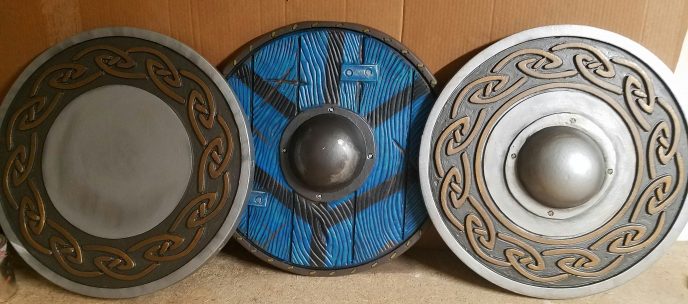Uncategorized
Winter is coming… so what do I do with my gear now??
While we don’t have any written data to support our claims, Forged Foam (formerly Edhellen Armory) is the oldest foam smith in the sport, and if you were to combine all the years each of us has been in a foam fighting sport, we have about 75 years worth of experience. Here is some of the advice we’ve compiled for storing and maintaining your gear on the off-season!
Probably the most important thing to consider when storing your gear is to make sure that they won’t be exposed to extreme temperatures or any excessive moisture—heat will soften glue and things come unstuck, and cold temperatures can shrink the tape. Water is also a big foam killer, but folks generally know not to keep their gear in puddles or under leaky pipes. Keeping your gear in an attached garage is generally good enough for your average fighter, but we recommend storing them in your home—like in a craft or storage room, if you have the space.
Make sure that when you store them, you’re not putting stab tips on the ground (this will wear out the tip quicker than normal), and whatever you do, do not place things on top of them! Some indents in foam can be molded out by using a heat gun or hairdryer and a little bit of hand massaging until the divot pops back into shape, but if you’re storing your old dumbbell set on top of your swords and shields, they probably won’t survive the winter.
In the off-season and during the fighting season, gear often gets left in trunks or backseats of cars; this is a big strain on your gear—and eventually your wallet! As mentioned previously, extreme temperatures can be extremely detrimental to your weapon set, and leaving it in your car for extended periods of time can do some pretty heavy damage. That’s not to say you can’t leave your gear in your backseat for a couple of hours, just use your best judgement.
We store our shields face to face and core to core, so if you’re stacking multiple shields, I’d recommend putting the first one (the one which will touch the floor) face down, and then stacking on top of that, alternating which way the face/core goes.
Right before you store your gear, we recommend checking it to make sure it passes, and doing any necessary repairs on the off-season, when you’re staring longingly at your weapons and wishing it were nice outside. Theses repairs include fixing covers, as a durable cover can really add longevity to the weapon. Make sure to periodically check your weapons, especially before your first practice/event of the season, and then maybe every few practices to make sure there’s no red flags.
--written by Iulia Ionescu (Desi S. Thompson)

